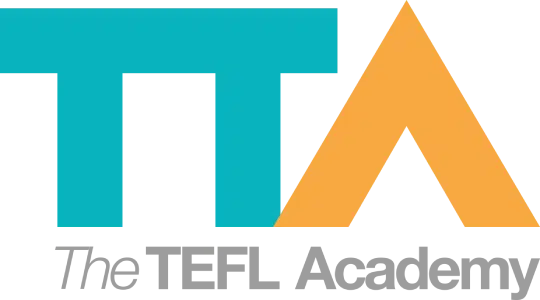Adapting To Different Learning Styles In Online Lessons
Join a global community of over 200,000 TEFL teachers working throughout the world! Enrol me!
Have you ever wondered why some learners need to see information written down or illustrated, others prefer to hear it explained, while many grasp concepts best by doing something with their hands?
For example, if you were teaching the word “apple,” a visual learner might remember it through a picture, an auditory learner through hearing it in a sentence, and a kinesthetic learner through holding or drawing one.
Every student learns in their own unique way. This is why understanding learning styles can be such a powerful tool in the classroom.
Recognising these differences doesn’t mean tailoring every lesson to each style individually, but it does mean using a variety of approaches so that all students have the chance to connect with the material.
If you’re a qualified TEFL teacher, you’re probably familiar with learning styles in the classroom, but does that translate to online teaching?
We asked TTA TEFL trainer and online teacher Joshua, who has experience in both worlds, to give us some insight into this topic.
Joshua: A wise trainer once asked me what the most important thing is when teaching a class. I said flexibility, to which he said that flexibility is important, but that preparation is king.
They’re not wrong!
I have more than 10 years’ experience in ESL, and I thought that my experience in training centres and public schools would suffice if I made the switch online, but boy, was I wrong. Teaching online was vastly different to what I was used to.
Okay, before we get into online teaching, let’s dive a little deeper into learning styles.
What are learning styles?
Learning styles are the styles in which you can learn at a higher capacity. Maybe you retain more when you can listen to something, when you see pictures, or when you can touch something.
Have you ever thought about what YOUR learning style is? Think about: when you study, how do you do it? Write notes? Talk to yourself? Watch videos? Do practical exercises? Do you prefer working alone or in a group? Pacing the room or standing on your head?
We all have a natural learning style (or combination). This is the best way for us to learn and remember new information. If you can imagine, as a teacher, you need to be able to identify and cater to all the different learning styles of your students.
When planning a lesson, you need to customise your lesson for the learning styles of the students. In face-to-face lessons, you can optimise the lesson by catering for the learning style of the class in front of you.
There are seven different recognised learning styles, but Joshua focuses on three in his lessons: auditory, visual, and kinaesthetic. The other learning styles are verbal/logical, social and solitary. These are often known as the VARK learning styles, as developed by educator Neil Fleming in 1987.
For me, this was all about changing the tasks and approach for the students: auditory (sound), visual (pictures), and kinaesthetic (moving around and letting them handle real objects).
For online teaching, just like Skype or online dating, the playing field is different. In a way, you almost have to unlearn everything you’ve learned through experience.
Don’t worry: Joshua tells us more about the tech-y tools he uses in his online lessons later.

Why do learning styles matter online?
Regardless of whether you’re learning in a physical or an online classroom, your learning styles are still there. The difference is teachers need to figure out how to cater to the range of different learning styles which are bound to be in the classroom.
I had to find a way to figure out the learning styles of my online students and approach my teaching in a different way.
You can’t move around with your students, but you can let them play a game where they click a dice, draw a picture, move an object, or write something.
You can include sound clips or change the tone of your voice when you read stories and make it more dramatic.
You can include more pictures and videos and prime the lesson to be more visual. I used props too here.
And even though you’re in an online classroom, you can still get students to work in groups (like with break-out rooms in Zoom) or individually.
Why might the idea of learning preferences still be helpful in lesson planning, especially online?
This idea of learning styles dates back to Howard Gardner’s theory of Multiple Intelligences from the 1960s – yip, all the way back then! Over the years the idea of learning styles has come under scrutiny, with many now believing there is no evidence to support the theory. And we can ask the question: Are learning styles still relevant?
We say yes, because the theory of learning styles can be useful in the classroom.
We know not everyone learns the same way. Our students may not prefer only one learning style, they might utilise a few simultaneously. It doesn’t really matter. The point is, we need to bring in variety when it comes to teaching methods to help our students learn more efficiently, however that may be.
As Joshua says:
When in Rome, you do as the Romans do. The same applies here: you get to know the students and customise the lesson for their specific needs to make a bigger impact.
Read more: From Teacher-Centred To Learner-Centred

What are some simple ways to vary your lesson delivery to appeal to different preferences?
There is more than one way to adapt an activity for different learning styles, by finding the right materials or teaching in a way that addresses the learning styles of the students.
For example:
- You might dramatise your part in a reading activity, play a sound clip, or include more visuals in the slide.
- I’ve found that allowing students to move often increases their ability to learn. For example, in one online lesson I gave a clue, and the students had to guess a word. If their space allowed it, they would then get up and spell the word by forming each letter with their bodies.
- I experiment with the visual setting by changing backgrounds. I once did a Halloween lesson where I switched the background and wore makeup and a costume to make it more engaging.
- In another case, I covered a lesson for a sick colleague. The reading material was making the student sleepy, but he had reacted positively to a song we sang at the start. So instead of reading aloud, I sang the text. Suddenly, he was fully engaged — singing his parts of the reading passage and laughing. I realised it’s a bit like turning vegetables into ice cream: you take something they don’t enjoy and transform it into something fun.
- I found that matching games, or any game where they use their hands — like a dice or drawing game — worked for kinaesthetic learners.
Can you share an example of a lesson or activity you adapted to suit different learners?
There was a lesson with a story about two friends going to the zoo, and I had to find a way to teach this to three different students.
For the visual learner: I read a few lines, and this being a simple text, asked them easy questions about the rest of the paragraph… “How many monkeys were there in the cage?” And they would go ahead and read it quickly.
For kinaesthetic students: I included small pieces of clipart and let them match the art to the words—monkey, for example, to a clipart picture of a monkey.
For auditory learners: I made it more theatrical by recreating the animal sounds.
Which digital tools or platforms help you deliver your lessons in different formats?
I am not very good with tech so I try and keep it simple. I create short PPTs using Keynote and make screenshots of images I find on Google.
Students respond really well to screenshots taken during the lesson — especially when you add a funny doodle on your face. Most platforms have handy tools like a digital dice and a timer, which are just as useful in online teaching as they are in physical classrooms.
But the most valuable feature, in my experience, is the visual settings. You can change the background, flip the screen, or use cheesy (but effective) special effects. These come in handy for moments when the students need affirmation and you want to give them a virtual high five
I learned the hard way when I worked at a language academy that lessons that are too complicated sometimes miss the point.
So look at the aims, consider the learning styles and keep it simple.

How can you avoid boxing students into fixed “types” while still offering choice and flexibility?
Students are never just this or that, but a little bit of everything.
Sometimes a visual student will do amazing things with the visual approach in one task, but including aspects of an auditory task for the next can be a fresh and effective way to build on the success of earlier tasks.
What is key is getting to know the students.
How do you gauge what teaching methods are effective for your students?
When I started out, I was often guilty of overthinking. The solution for me was to keep the human element in my lessons and style.
You see it whenever their eyes start drifting or when they start yawning. What I usually do then is increase the volume of my voice and move closer to the camera.
Students often want to share some of their own thoughts, and involving them in the lesson can be a solution.
In the context of the lesson about the zoo, you can ask them if there are any zoos close to them, what animals they like, or even better, what wild animals they’d want as pets.
Personalisation is a very important aspect of teaching and should be incorporated into your lessons as much as possible.
The bottom line is that you need to figure out what they like and use this to their benefit, in the style they learn at full capacity—but most of all, you should try and remember the fun factor.
Accreditation & Quality Assurance
The TEFL Academy was the world’s first TEFL course provider to receive official recognition from government regulated awarding bodies in both the USA and UK. This means when you graduate you’ll hold a globally recognised Level 3 (120hr) Certificate or Level 5 (168hr) Diploma, meaning you can find work anywhere and apply for jobs immediately.
 United States
US
United States
US












